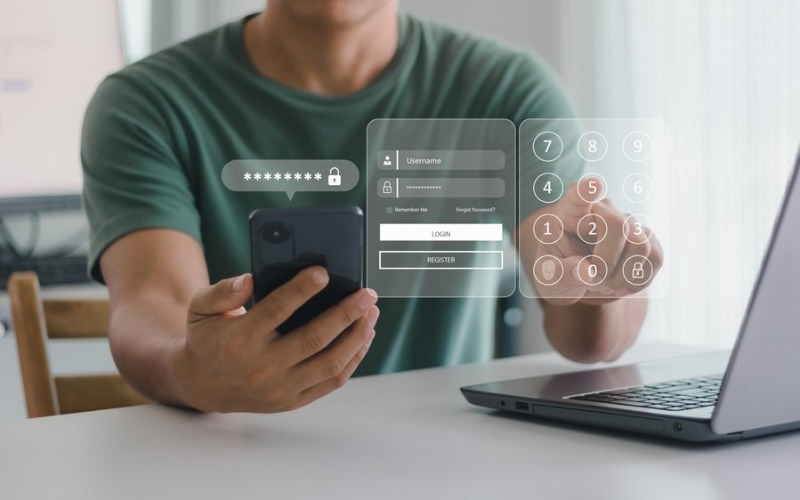You do everything right when it comes to following the best cybersecurity practices. You don’t reuse passwords, you keep your antivirus software up to date, and you never click on suspicious links. You’ve even embraced multi-factor authentication (MFA) as an extra layer of security. But what if we told you that the very thing you rely on to protect your online accounts could be used against you?
Welcome to the new era of phishing, where cybercriminals use advanced AI-generated emails, deceptive ads, and even near-perfect fake websites to steal your credentials—and your MFA codes. This isn’t your average phishing scam; it’s called reverse proxy phishing, and it’s one of the most modern forms of account takeover (ATO) that consumers need to be aware of. Worse yet, many traditional security solutions struggle to detect it in real-time, making it an even more dangerous threat.
What Is MFA Compromise? An Invasive High-Tech Scam
MFA compromise, also sometimes called man-in-the-middle (MITM) reverse-proxy phishing or adversary-in-the-middle (AITM) phishing, is a sophisticated attack method designed to trick even the savviest Internet users. Here’s how it works:
- The Setup: You receive a phishing email or click on a deceptive ad, leading you to what appears to be a legitimate website—one that mimics a well-known business or service.
- The Trap: The attacker has set up a reverse proxy server, which secretly acts as an intermediary between you and the real company’s website. Everything looks normal to you, but in reality, your requests are passing through the attacker’s server.
- Credential Theft: You enter your username and password, thinking you’re logging in safely. On the back end, the attacker’s system immediately relays your credentials to the real website.
- MFA Compromise: The company sends you a one-time passcode (OTP) for authentication in an email, text message, or an authenticator app. You enter the code—but because the phishing site is still acting as an intermediary, the attacker grabs that code in real time.
- Account Takeover: With your credentials and your MFA token, the attacker now has full access to your account. Just like that, your digital security is breached.
Why This Attack Is So Hard to Spot
This attack is incredibly effective because it preys on trust and familiarity.
- Flawless Phishing Pages: These fake websites are nearly indistinguishable from the real ones. They often use URL spoofing techniques, such as replacing letters with similar-looking characters (e.g., myfavoritec0mpany.com instead of myfavoritecompany.com), making them difficult to detect.
- Bypassing Traditional Security: Many MFA systems weren’t designed to defend against real-time credential interception. Attackers don’t need to hack your MFA—they just need to trick you into handing it over.
- Certificate Trickery: Some of these fraudulent sites even have SSL (Secure Sockets Layer) certificates, giving them the little padlock icon in the address bar of your browser that typically signals a secure connection.
How You Can Protect Yourself
Now that you know how MFA compromise works, here are five steps you can take to defend against it:
- Arm Yourself with Knowledge: MFA is important, but it’s not foolproof. Understand that modern phishing attacks can bypass it and stay informed about new attack methods.
- Check URLs Carefully: Attackers use lookalike domains to fool users. Always hover over links before clicking and pay close attention to the web address before entering credentials.
- Use a Password Manager: Password managers won’t autofill credentials on fake websites, making them a great way to spot phishing attempts.
- Pay Attention to Security Warnings: Many businesses are implementing MFA compromise detection software that alerts users when they may be interacting with a fake site. Don’t ignore these warnings.
- Consider Phishing-Resistant MFA: If a business offers phishing-resistant MFA, such as passkeys or security keys, consider enabling it. These methods use biometrics (like face ID or fingerprint authentication) or device-based authentication, making them more secure against phishing attacks.
The Future of Digital Security
As cybercriminals get more sophisticated, so too must our defenses. MFA compromise attacks are proof that security measures need to evolve. Businesses are beginning to adopt phishing-resistant authentication methods and use platforms like the one from Arkose Labs to detect, alert, and stop dangerous phishing scams, but until they become widespread, consumers must stay vigilant.
By staying informed and taking proactive steps to protect your accounts, you can keep your personal information safe and out of the hands of cybercriminals. In the digital age, awareness is your first line of defense—and it might just be the key to keeping your accounts secure from scams.











